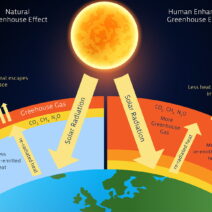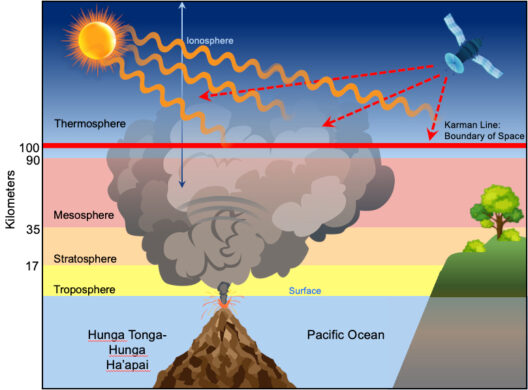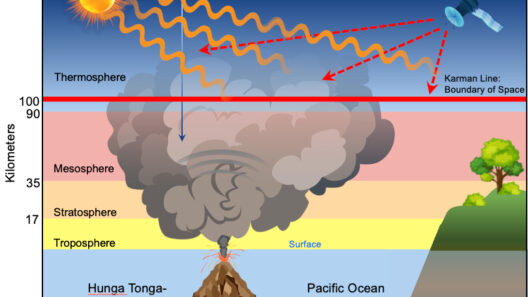Climate change looms over humanity like an insatiable specter, relentlessly altering the very fabric of our ecosystems, and in turn, our health. “Breathing heat” serves as an apt metaphor for the environmental shifts we experience; just as heat fills a room, suffocating and self-reinforcing, so too do the consequences of rising temperatures pervade our atmosphere, illuminating underlying threats to our well-being.
The escalation of global temperatures drives a cascade of health-related issues, intertwined with the rhythms of nature. As the planet warms, air quality diminishes, yielding a toxic cocktail of pollutants that exacerbates respiratory maladies. The rise of ground-level ozone, intensified by heat, acts as a volatile barrier, ensnaring those most vulnerable—children, the elderly, and individuals with pre-existing pulmonary conditions. Asthma, chronic obstructive pulmonary disease (COPD), and other respiratory ailments have seen a marked uptick, sparking alarms within healthcare domains as emergency rooms overflow during sweltering months.
Yet, respiratory issues are just the tip of the proverbial iceberg. The inexorable march of climate change also lays bare the interconnectedness of vectors and pathogens that transcend geographical boundaries. The very climate reshaping our world teems with potential for burgeoning infectious diseases. With rising temperatures and altered precipitation patterns, habitats for mosquitos and ticks expand, inviting maladies such as Lyme disease and West Nile virus into regions once considered insulated from these insidious threats. Increased transmission of vector-borne diseases stands as a formidable reminder of how ecological instability directly influences human health.
Moreover, extreme weather events—hurricanes, floods, wildfires—are no longer rare anomalies but rather the new norm. Picture a symphony of chaos as torrential rains give way to floods, uprooting communities and swallowing homes. These cataclysmic incidents result in injuries, fatalities, and mental health crises, echoing the disquiet of those caught in the turmoil. Post-traumatic stress disorder (PTSD) often follows in the wake of these natural disasters, as survivors grapple with loss and uncertainty. The necessity for a robust mental health support system becomes paramount, yet it is often relegated to the periphery amidst the physical devastation.
The agricultural domain is another battleground, where climate change dictates food security and nutrition. The interdependence of climate and crop yields creates an intricate web; soaring temperatures and unpredictable rainfall patterns can devastate harvests. The resultant scarcity of nutritious food escalates the risk of malnutrition and micronutrient deficiencies, particularly in vulnerable populations. As crops suffer, so too does the demand for adaptive agricultural practices, underscoring the urgent need for innovation in food production that aligns with ecological conservation.
As society awakens to these health ramifications of climate change, it becomes clear that our shelter—the home we erect against the elements—affects our well-being in unforeseen ways. Urban heat islands, a phenomenon where urban areas experience higher temperatures than their rural counterparts, render cities particularly inhospitable during heatwaves. Amidst concrete jungles, natural cooling willows and greenspaces wane, exacerbating heat-related illnesses. Vulnerable populations, including the elderly and low-income households, often lack access to cooling resources, leading to preventable heatstroke and other heat-associated conditions.
In this milieu, the concept of health equity emerges as a vital pillar in articulating the multifaceted implications of climate change on human welfare. Disparities in health outcomes are often rooted in socio-economic factors, with marginalized communities disproportionately bearing the brunt of adverse environmental changes. The struggle for clean air, safe drinking water, and adequate healthcare becomes emblematic of a broader societal challenge—bridging the chasm of inequality exacerbated by climate-induced stresses.
So, what can be done in response to this environmental tapestry woven with the threads of health considerations? First, education serves as a powerful tool. Raising awareness around the health impacts of climate change equips individuals with knowledge to advocate for policy changes and adopt sustainable practices. It beckons people to consider their ecological footprints, inspiring actionable steps such as reducing carbon emissions, conserving energy, and supporting local agriculture.
Second, a multifaceted approach encompassing community resilience, public health preparedness, and policy reform is essential. Communities must cultivate resilience through infrastructural adaptations. For example, cities can enhance tree canopy cover and create green roofs to mitigate heat, while also investing in efficient public transport systems that promote sustainable living. Public health initiatives must be prioritized to develop holistic strategies that address potential health crises linked to climate change—from proactive mental health support to vector surveillance.
Legislation also plays a crucial role in shaping a healthier future. Policymakers must elevate the narrative of health in climate discussions, recognizing the intricate connections between our environment and overall well-being. This calls for a commitment to comprehensive climate policies that prioritize both environmental sustainability and public health advancement.
In conclusion, as “breathing heat” unfolds its metaphorical layers, society stands at a crossroad—an opportunity to reshape our health paradigms in light of the climate crisis. The urgency to confront these multifaceted challenges cannot be overstated. By recognizing the intimate bond between climate change and human health, we can adopt transformative practices that safeguard not only our well-being but the vitality of our planet. A call to action resounds; for every breath of warmer air we inhale, let us forge a more harmonious existence with our environment, enriching both human health and the ecosystems that sustain us.




